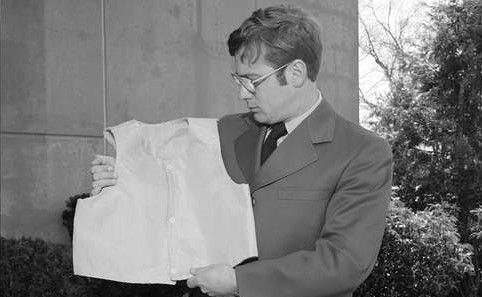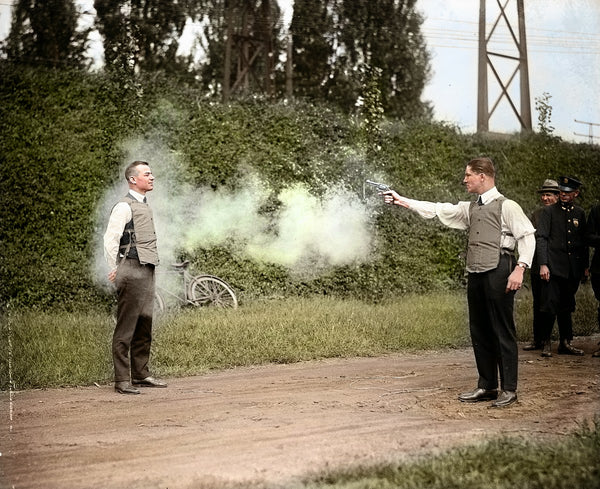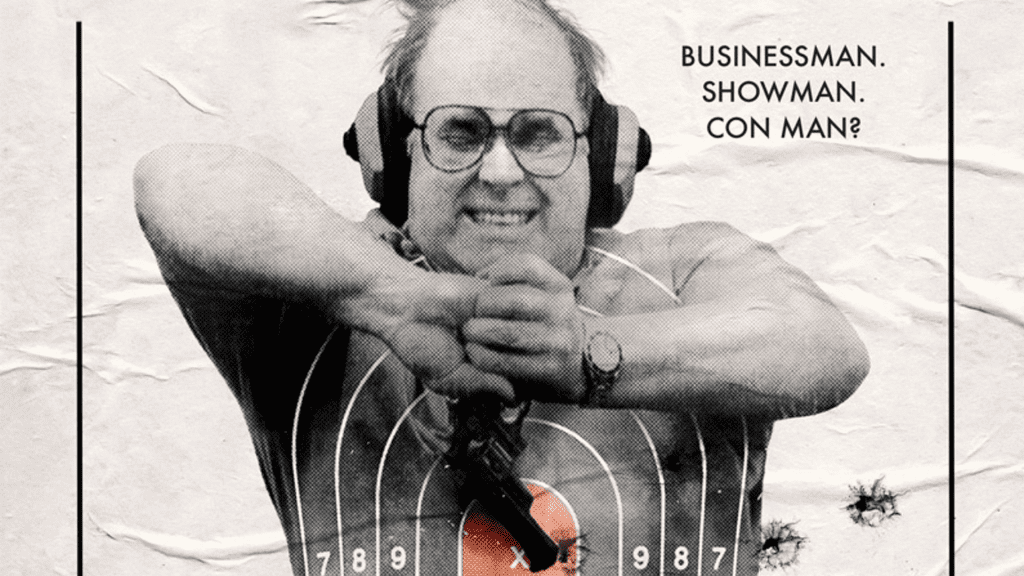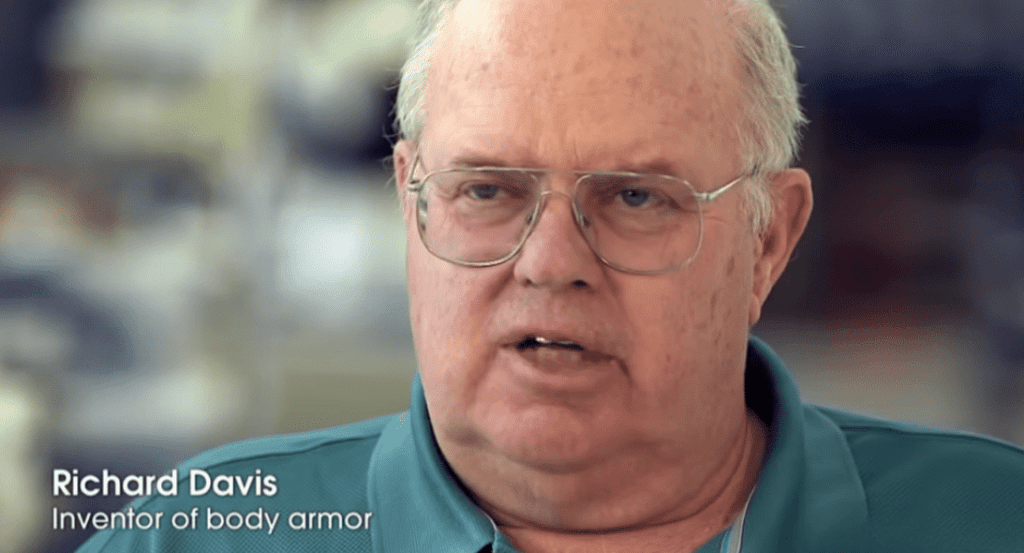In the world of invention, few stories are as daring, dramatic, and ultimately tragic as that of Richard Davis. A former pizza delivery man turned innovator, Davis didn’t just create a revolutionary piece of protective gear he literally put his life on the line to prove it worked.
To demonstrate the effectiveness of his bulletproof vest, Davis shot himself at point-blank range. Not once. Not ten times. But more than 190 times over the years. Each time, he stood in front of crowds, loaded a gun, and pulled the trigger trusting his invention with his life.

The Birth of the Modern Bulletproof Vest
In the 1970s, Davis introduced a new type of soft body armor using Kevlar, a strong synthetic fiber. Before his vest, law enforcement officers had very little in the way of reliable protection from bullets. His product changed that. Suddenly, police departments across the country began ordering vests, saving countless lives in the years that followed.
Davis founded the company Second Chance, which quickly became the leading supplier of bulletproof vests for police. His demonstrations were part genius marketing and part personal crusade. To many officers, he was a hero someone who truly believed in what he sold.

From Hero to Cautionary Tale
But the story didn’t end with success. In the early 2000s, Richard Davis’s reputation took a devastating hit. Reports emerged that some of his vests, made with a newer material called Zylon, were failing in the field. Tragically, several officers were shot and killed while wearing vests that were supposed to protect them.
Video:
This Inventor Shot Himself to Market His Invention
Investigations revealed that Davis and his company had been warned about the potential problems with Zylon. Despite this, they continued to sell the vests, believing the risk was minimal or manageable. The fallout was swift and brutal. Lawsuits were filed. Trust was broken. And for many, the name Second Chance no longer stood for safety it stood for betrayal.
2nd Chance: A Documentary That Pulls No Punches
In 2022, the documentary 2nd Chance was released, chronicling Davis’s wild journey from fearless inventor to controversial figure. Directed by Ramin Bahrani, the film dives into Davis’s early motivations, his explosive rise in the business world, and the ethical questions that haunted his downfall.
The documentary doesn’t paint Davis as a villain or a saint. Instead, it shows the complexity of a man who was both courageous and flawed, visionary and reckless. It invites viewers to reflect on what happens when innovation outruns responsibility and who pays the price.

What We Can Learn From Richard Davis’s Legacy
Richard Davis’s story is a powerful reminder of the thin line between brilliance and disaster. His original invention likely saved thousands of lives. His fearlessness inspired a generation of law enforcement officers to believe in better protection. But his failure to acknowledge and correct the problems with Zylon cost others their lives.
Invention and progress often come with risk. But when lives are on the line, that risk must be balanced with transparency, testing, and ethics. Davis’s journey shows what happens when that balance is lost.
Video:
I Shot Myself On Purpose – Bulletproof Everyone
Conclusion: A Cautionary Tale Wrapped in Kevlar
Richard Davis may have started out trying to do the right thing. And for a time, he did. He gave police officers a fighting chance. He made people believe in safety again. But in the end, his refusal to adapt, to acknowledge mistakes, and to act on warnings turned a groundbreaking story into a cautionary tale.
The documentary 2nd Chance is more than just a film about body armor. It’s a reflection on the human desire to be a hero, the temptations of profit, and the consequences of ignoring the truth. Whether you see Davis as a bold pioneer or a reckless gambler, his story won’t leave you untouched.
If you’re interested in invention, integrity, or the blurry lines in between, 2nd Chance is a must-watch. It’s not just about bulletproof vests. It’s about what it truly means to take responsibility even when the bullets stop flying.



